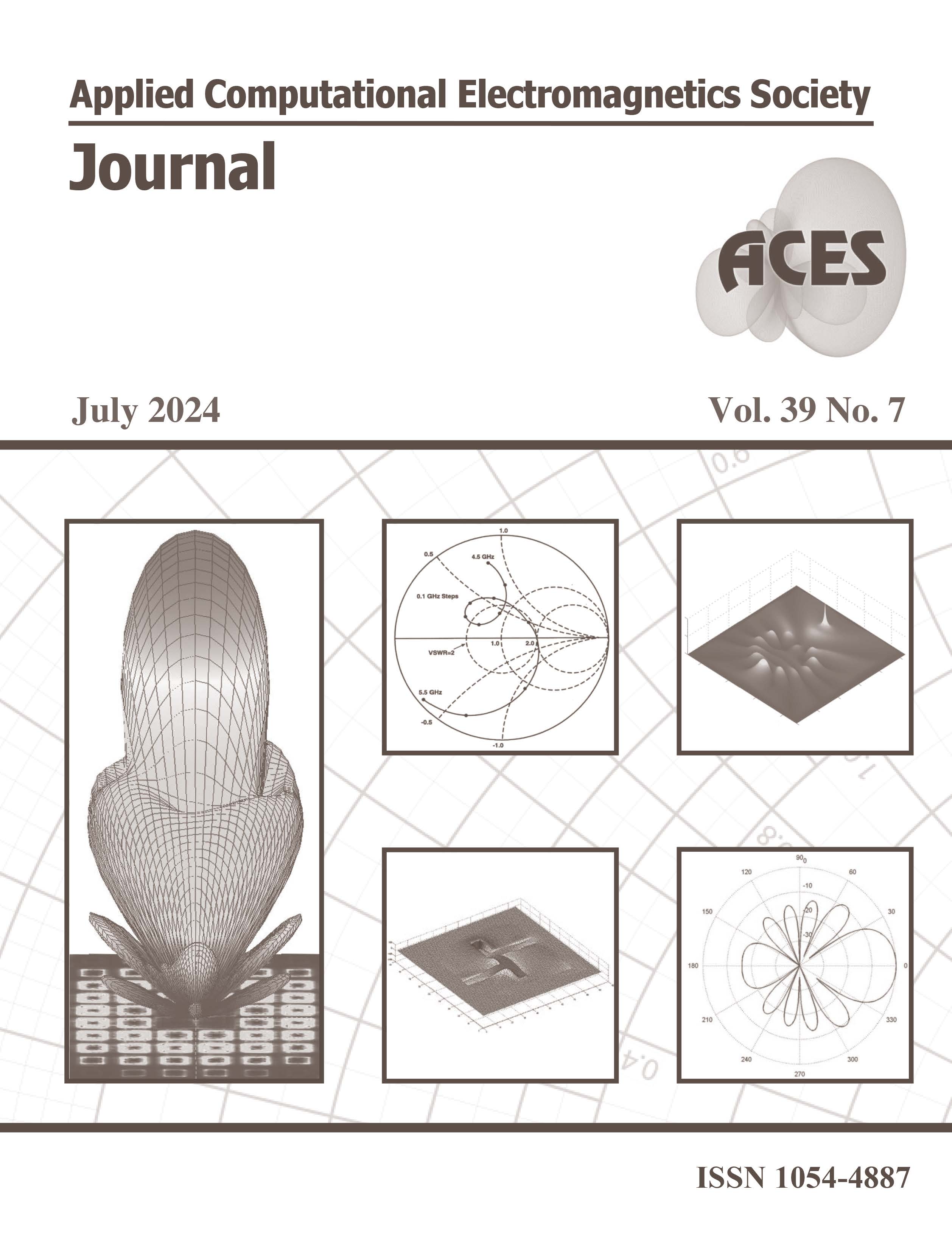Improving Kriging Surrogate Model for EMC Uncertainty Analysis Using LSSVR
DOI:
https://doi.org/10.13052/2024.ACES.J.390705Keywords:
Electromagnetic compatibility (EMC), Kriging, least squares support vector machine regression (LSSVR), surrogate model, uncertainty analysis methodAbstract
As the in-depth study of uncertainty analysis in electromagnetic compatibility (EMC) progresses, the surrogate model-based uncertainty analysis method has increasingly become a popular research topic. The Kriging model is one of the classical surrogate models and plays an important role in EMC uncertainty analysis. However, an in-depth study of the Kriging sampling strategy is missing in the existing research on uncertainty analysis. The traditional sampling strategy employs Latin hypercube sampling (LHS) to select all sampling points at once, which makes the computational efficiency and accuracy of the surrogate model uncontrollable. This paper proposes a strategy that applies least squares support vector machine regression (LSSVR) to assist Kriging in sampling, significantly improving the efficiency and accuracy of the Kriging surrogate model.
Downloads
References
J. Bai, K. Guo, J. Sun, and N. Wang, “Application of the multi-element grid in EMC uncertainty simulation,” Applied Computational Electromagnetics Society Journal, vol. 37, no. 4, pp. 428-434, Apr. 2022.
R. Trinchero, M. Larbi, H. M. Torun, F. G. Canavero, and M. Swaminathan, “Machine learning and uncertainty quantification for surrogate models of integrated devices with a large number of parameters,” IEEE Access, vol. 7, pp. 4056-4066, Dec. 2019.
A. Biondi, D. Vande Ginste, D. De Zutter, P. Manfredi, and F. G. Canavero, “Variability analysis of interconnects terminated by general nonlinear loads,” IEEE Trans. Compon. Packag. Manufact. Technol., vol. 3, no. 7, pp. 1244-1251, July 2013.
J. Shen, H. Yang, and J. Chen, “Analysis of electrical property variations for composite medium using a stochastic collocation method,” IEEE Trans. Electromagn. Compat., vol. 54, no. 2, pp. 272-279, Apr. 2012.
J. Bai, G. Zhang, A. P. Duffy, and L. Wang, “Dimension-reduced sparse grid strategy for a stochastic collocation method in EMC software,” IEEE Trans. Electromagn. Compat., vol. 60, no. 1, pp. 218-224, Feb. 2018.
J. Bai, B. Hu, H. Cao, and J. Zhou, “Uncertainty analysis method for EMC simulation based on the complex number method of moments,” PIER Letters, vol. 121, pp. 7-12, 2024.
Z. Fei, Y. Huang, J. Zhou, and Q. Xu, “Uncertainty quantification of crosstalk using stochastic reduced order models,” IEEE Trans. Electromagn. Compat., vol. 59, no. 1, pp. 228-239, Feb. 2017.
Z. Ren, J. Ma, Y. Qi, D. Zhang, and C.-S. Koh, “Managing uncertainties of permanent magnet synchronous machine by adaptive Kriging assisted weight index Monte Carlo simulation method,” IEEE Trans. Energy Convers., vol. 35, no. 4, pp. 2162-2169, Dec. 2020.
P. Besnier, F. Delaporte, and T. Houret, “Extreme values and risk analysis: EMC design approach through metamodeling,” IEEE Electromagn. Compat. Mag., vol. 10, no. 4, pp. 80-93, 2021.
T. Houret, P. Besnier, S. Vauchamp, and P. Pouliguen, “Controlled stratification based on Kriging surrogate model: An algorithm for determining extreme quantiles in electromagnetic compatibility risk analysis,” IEEE Access, vol. 8, pp. 3837-3847, 2020.
H. Li, B. Zhu, and J. Chen, “Optimal design of photonic band-gap structure based on Kriging surrogate model,” PIER M, vol. 52, pp. 1-8, 2016.
S. Kasdorf, J. J. Harmon, and B. M. Notaroš, “Kriging methodology for uncertainty quantification in computational electromagnetics,” IEEE Open J. Antennas Propag., vol. 5, no. 2, pp. 474-486, Apr. 2024.
M. Sedaghat, R. Trinchero, Z. H. Firouzeh, and F. G. Canavero, “Compressed machine learning-based inverse model for design optimization of microwave components,” IEEE Transactions on Microwave Theory and Techniques, vol. 70, no. 7, pp. 3415-3427, July 2022.
S. Kushwaha, N. Soleimani, F. Treviso, R. Kumar, R. Trinchero, F. G. Canavero, S. Roy, and R. Sharma, “Comparative analysis of prior knowledge-based machine learning metamodels for modeling hybrid copper-graphene on-chip interconnects,” IEEE Trans. Electromagn. Compat., vol. 64, no. 6, pp. 2249-2260, Dec. 2022.
F. J. Massey, “The Kolmogorov-Smirnov test for goodness of fit,” Journal of the American Statistical Association, vol. 46, no. 253, pp. 68-78, Mar. 1951.
J. Bai, Y. Wan, M. Li, G. Zhang, and X. He, “Reduction of random variables in EMC uncertainty simulation model,” Applied Computational Electromagnetics Society Journal, vol. 37, no. 9, pp. 941-947, Sep. 2022.
J. Bai, J. Sun, and N. Wang, “Convergence determination of EMC uncertainty simulation based on the improved mean equivalent area method,” Applied Computational Electromagnetics Society Journal, vol. 36, no. 11, pp. 1446-1452, Nov. 2021.




